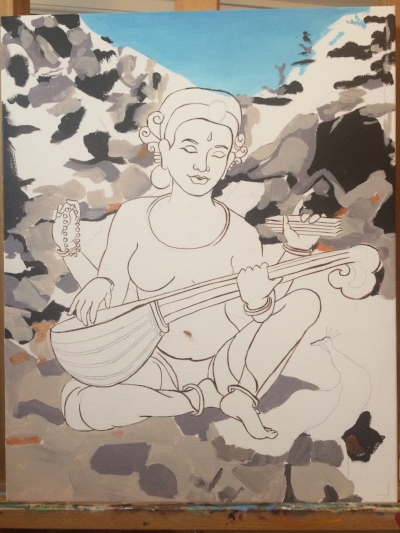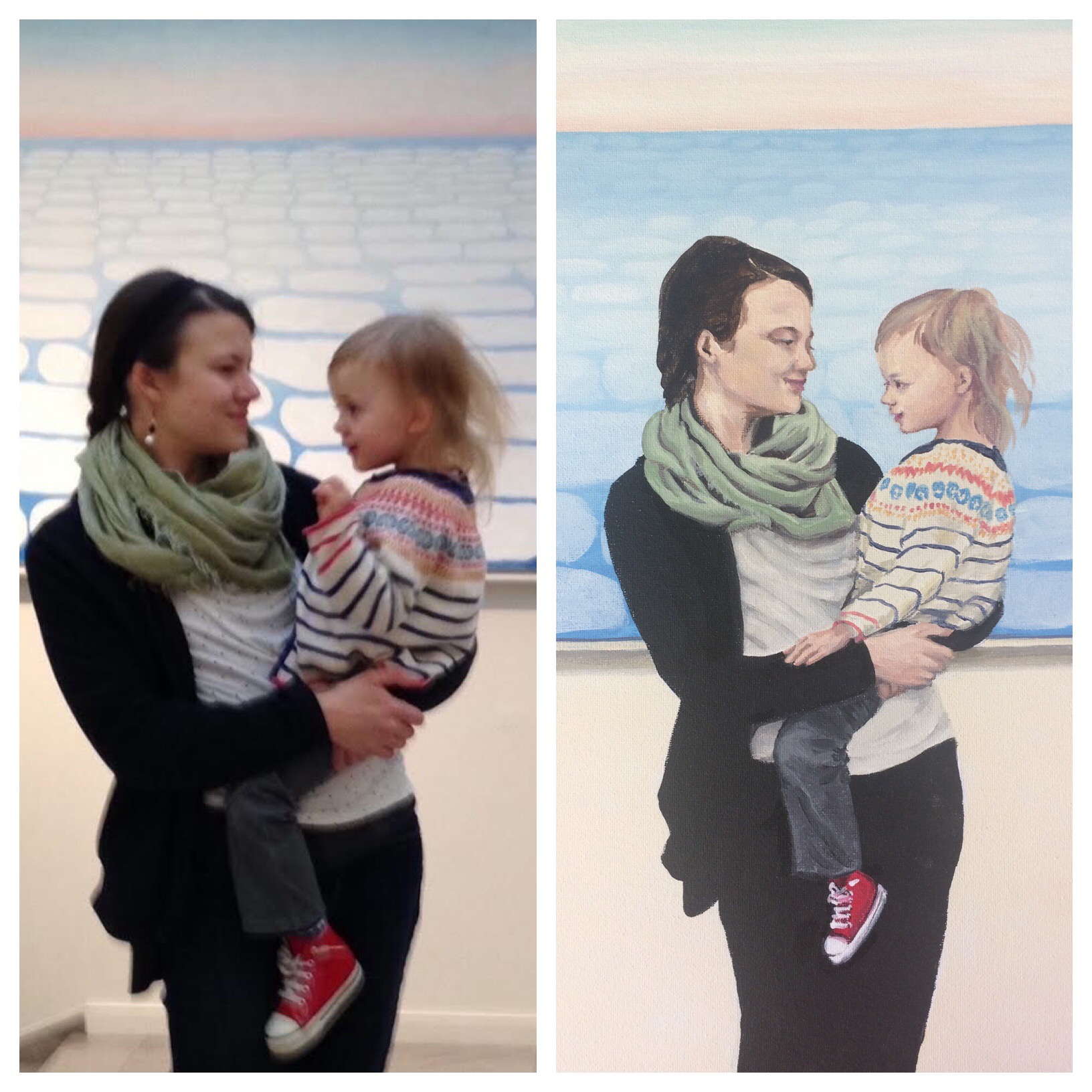I worked on a painting yesterday and it was a very long two hours of effort. For most of that time, I wasn’t thrilled with what I saw on the canvas but I kept working at it to work things out. At the end, I got some space from the painting and the rocks came into view. Ahhh.
The other day I was looking at one of my favorite paintings and remembering the challenge of working through the details. I spent 4+ hours on Kelly’s face – a two-inch square area. I’m pretty sure I cried that afternoon.
But all that struggle is gone now. In its place is a beautiful painting. I love looking at it every day and continue to see something new. And I feel so lucky that I was part of bringing this art into being.









